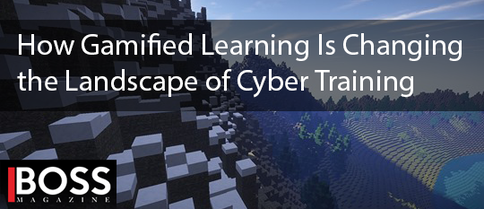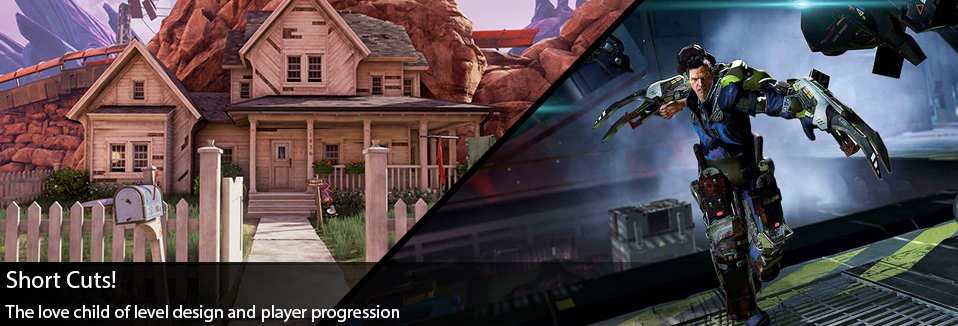|
|
Personal Projects
|
|
|
Honestly I’m not sure there’s anything more satisfying than finding a good shortcut. It's such a relief to when you turn a corner and realize you aren’t entering a new area, rather you’ve connected a previously unknown path. Oddly enough this has actually been a big theme in my most recent gaming experiences, and I’ve been trying to think of the best ways of discussing short cuts and how they can be used to leverage player experience. Today I’m going to be talking about Obduction, and The Surge… no real spoilers so you should be safe :p Obduction is a new adventure game by Cyan Worlds, the folks who did all of the original Myst games. Within Obduction your character has been teleported to a strange alien world that the player must explore, and solve puzzles in an an attempt to find their way home. Obduction is what you’d expect from a modern adventure/exploration game, large interesting environments to navigate, searching for clues and items, with foreign machinery and codes to decipher… and a few sprinkled notes and textual clues to read. Upon entering the world of Hunrath, the first playable area, you can tell that the world is rich and deep. If you look carefully, the world has been designed to tell a story. A broken sign, a locked door, or even an object out of place helps establish the plot. After some exploration you’ll realize that this only one of many worlds you’ll travel to and that the worlds of Obduction have many layers and paths to uncover… backtracking through areas once you have additional info is highly regular in this game. So much so when you uncover a new area, the size of it may become daunting. Many times I’d unlock a new zone and have the feeling of “oh no, there’s so many routes to explore.” This is where our friend the “short cut” comes in! In a game such at this, it can start to be a bit unclear if you’re making progress. At times there are clear indications that “the world has changed” or “this puzzle has been unlocked,” but often while you’re exploring it can feel as though you’re not making any headway. The clearest indication for me has been when I unlock a path to somewhere new, or more predominantly a path to someplace I’ve been before. There’s a massive sense of relieve as you realize that your world has become easier to navigate or just less confusing in general. The Surge on the other hand is a sci-fi action role playing game, that takes place in a dystopian future where humans have used up most of Earth’s resources. In this future there’s an odd relationship between technologically augmenting people and the harmful effects of doing so… honestly still only part way through the campaign so I can’t quite grasp the entirety of the story yet. What I can say is that the game has you playing a paraplegic man named “Warren” who, through a sequence of events, gets a exoskeleton grafted to his body. This allows him to walk, augment himself, and perform impressive combat maneuvers. Warren is stuck in this “facility” with other augmented people, some seem to be sane enough and others are zombie like and try attacking you on sight. Much of the game has you hesitantly exploring hallways, The Surge loves to place enemies just around corners in an effort to jump scare you at any time. Most of the environment could be described as maze like, and the further you progress the more stressful the game becomes. As you kill enemies you gain “tech scrap” that you use to level your character and craft items, but if you die you drop the tech scrap you’ve accumulated. So as you continue to go deeper, wasting resources like health kits and gaining more tech scrap, the risk of loss grows higher and so does the tension. In a game such as this, finding a short cut feels like a saving grace. As you explore you’re always asking yourself if you should push on in hopes of unlocking a short cut to safety, or turn back with your earnings. It may feel a bit strange that I’m comparing a puzzle adventure game to a fairly hardcore sci-fi action role playing game… yet they are both using “short cuts” in similar definitive ways. In large part I find it’s because these games function as open world environments, without the definition of “levels.” While they have “areas” these are different as a new area isn’t always an indication of a clear next step like a level, often you may find something in a new area that allows you to interact with something in a previous zone… meaning in order to progress sometimes you have to actually go back to where you’ve been, unlike a traditional “level.” In these sprawling areas when you’re able to modify paths and unlock new routes, it feels like a clear “Achievement Unlock” moment for the player. I think that’s what I find the most interesting about this, as it’s a connection between level design and player experience/progression. Not only does the world have to connect in meaningful and logical ways, but also in a way that has the player advance at a tempo that doesn’t break the game balancing.
Short cuts allow for passive player progression in a way that doesn’t have to be indicated by a “you’ve leveled up” prompt. In an elegant way, even if your character isn’t stronger, by unlocking alternative routes to your objective the world has become more manageable. It’s the player leveling up in their comprehension of the game world and understanding how to navigate it more efficiently. Which is equally important for games where you’re avoiding blood thirsty mechanized zombies or just solving puzzles on alien worlds. I find this kind of relationship between level design and player progression has been toyed around with in the past, Dark Souls in particular, and I hope we can continue to see these relationships leveraged in future games.
0 Comments
|
AuthorI make games, I play games... and sometimes I have some thoughts about that. Archives
March 2024
|
Proudly powered by Weebly














 RSS Feed
RSS Feed